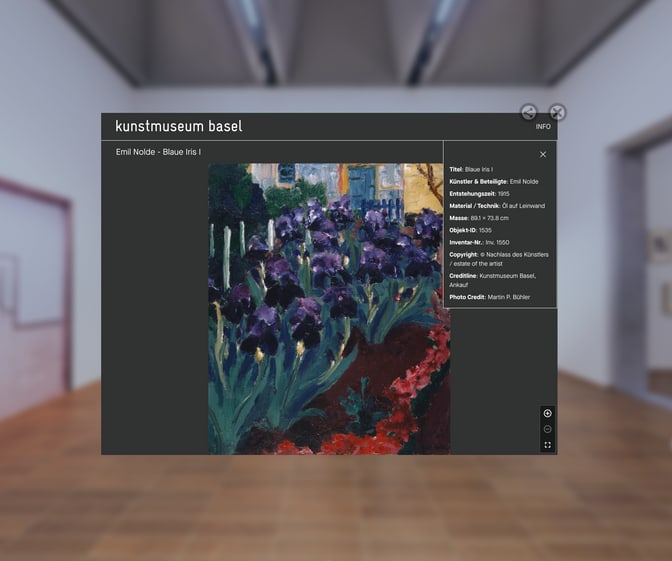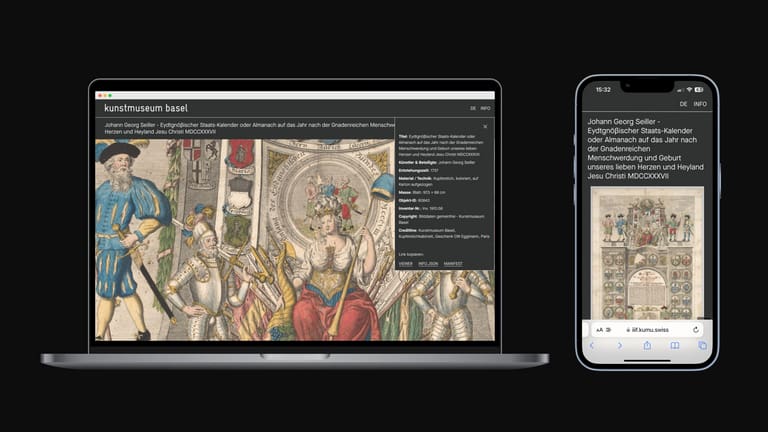The collection of the Kunstmuseum Basel is one of the most valuable in Switzerland and is known worldwide. Now, images of the artworks can be viewed in very high resolution in the newly developed viewer. The open-source standard IIIF allows users to zoom and deep dive into the images, similar to maps on the internet.
IIIF-Viewer with additional information
With IIIF, the display of the images is optimised so that the image can be displayed quickly. This way, as little data as possible is transmitted. Instead of loading the image in full resolution, an overview is transmitted first, similar to map applications such as Google Maps or Google Earth. As soon as the user zooms into the image, the respective sections of the image are reloaded in high quality. This enables a dynamic and responsive display and immersion in the details of the images.
Using existing services and merging information
The Kunstmuseum Basel manages its collection with the MuseumPlus system. The images of the artworks are stored in Picturepark and are delivered via a CDN. The newly developed service, based on microservices, combines these different data sources. In addition to the IIIF-Viewer, further information on the artwork is displayed on the page. Furthermore, the file 'Manifest.json' is offered for download so that art historians, for example, can use their own tools to display the images.
Easy handling in different contexts
The new viewer can be used in different contexts. It is also used by the Kunstmuseum Basel for a virtual tour, which is offered on the museum's website.

By using additions to the URL, specific parameters can be controlled easily: for example, fading out of the language change or folding out of the info panel for information on the artworks.
Agile approach with the users in the centre of attention
We implemented the project in close collaboration with the Kunstmuseum Basel and the partners involved. The project started with a simple MVP, i.e. a simple page that can display the images, but not much more. The next step was to add and optimise the info panel with the information. The third step was to add features like changing the language and controlling specific parameters of the viewer via the URL. In close cooperation with the art museum, we developed a streamlined but all the more practical IIIF-Viewer in a short time.

